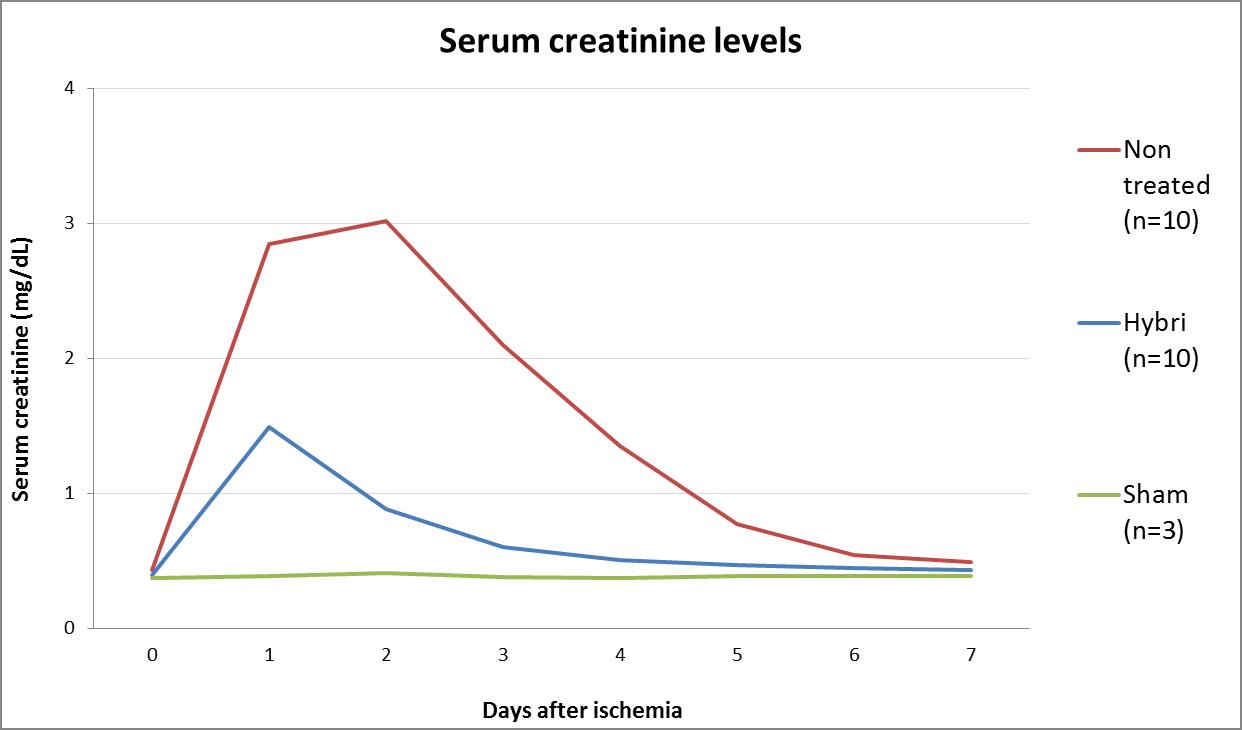Dual and Opposite Costimulatory Targeting with a Novel Hybrid Protein Effectively Prevents Renal Warm Ischemia Reperfusion Injury in a Rat Bilateral Kidney Model
1Experimental Nephrology, IDIBELL, Hospitalet de Llobregat, Spain, 2Bellvitge University Hospital, Hospitalet de Llobregat, Spain
Meeting: 2020 American Transplant Congress
Abstract number: 410
Keywords: Co-stimulation, Immunosuppression, Inflammation, Ischemia
Session Information
Session Name: Basic: Ischemia Reperfusion & Organ Rehabilitation II
Session Type: Oral Abstract Session
Date: Saturday, May 30, 2020
Session Time: 3:15pm-4:45pm
 Presentation Time: 4:27pm-4:39pm
Presentation Time: 4:27pm-4:39pm
Location: Virtual
*Purpose: Many studies showed the CTLA4 effectiveness in the inhibition of CD28-CD80/86 costimulatory pathway in transplant and autoimmune diseases. Furthermore, the PD1-PDL1/2 interaction has been highlighted as an important coinhibitory pathway to decrease the inflammatory profile in ischemia reperfusion injury. The importance of these two opposite pathways in the transplant related world and its potential synergistic effect leaded our group to design a hybrid protein with two domains (CTLA4 and PD-L2) linked to an Fc fragment of an IgG protein, named Hybri. The objective was to evaluate the effect of this molecule in experimental renal ischemia reperfusion injury.
*Methods: In this model, Lewis rats were randomly allocated into tree different groups: Non-treated (n=10); Hybri (n=10) 20mg/kg intraperitoneally 24h before ischemia; and Sham (n=3). Renal warm bilateral ischemia of 40′ was performed, with 7 days of follow up. Renal function, conventional histology (ATN, tubular dilation, edema, interstitial infiltrate; semi-quantitative from 0 to 3+) and immunohistochemistry (CD68, CD3 and FoxP3 cells) were analyzed in all groups. Daily peripheral blood and spleen cell subpopulations at sacrifice were monitored. Kidney gene expression for a panel of genes involved in the ischemia reperfusion process was evaluated.
*Results: Hybri group showed high improvement in all the studied parameters compared with Non-treated group. The Hybri therapy produced a significant amelioration of renal function the following days after warm ischemia, with a reduction of the creatinine peak on day one from 2.85 to 1.5 mg/dL (Figure). A significant reduction of histological damage was observed from a total SCORE of 6.75 to 3.2. The treatment revealed a significant reduction of CD68 infiltrating cells. Hybri group also showed a reduction almost in half in CD3 infiltrating cells and an enrichment of FoxP3 infiltrating cells in the kidney. No differences in peripheral blood or spleen subpopulations profile were seen. A partial or clear reduction of some of the studied genes was observed, in particular on Ccl3, Emp3, Lgals3, Reln, Socs3 and Spp1 genes.
*Conclusions: In conclusion, the dual and opposite costimulatory targeting with that novel protein suggests a good microenvironment profile to protect the ischemic process in the kidney and largely avoids the progression of inflammation in this rat model.
To cite this abstract in AMA style:
Guiteras J, Ramon LDe, Crespo E, Bolaños N, Fontova P, Jarque M, Torija A, Bestard O, Grinyó J, Torras J. Dual and Opposite Costimulatory Targeting with a Novel Hybrid Protein Effectively Prevents Renal Warm Ischemia Reperfusion Injury in a Rat Bilateral Kidney Model [abstract]. Am J Transplant. 2020; 20 (suppl 3). https://atcmeetingabstracts.com/abstract/dual-and-opposite-costimulatory-targeting-with-a-novel-hybrid-protein-effectively-prevents-renal-warm-ischemia-reperfusion-injury-in-a-rat-bilateral-kidney-model/. Accessed December 16, 2025.« Back to 2020 American Transplant Congress

